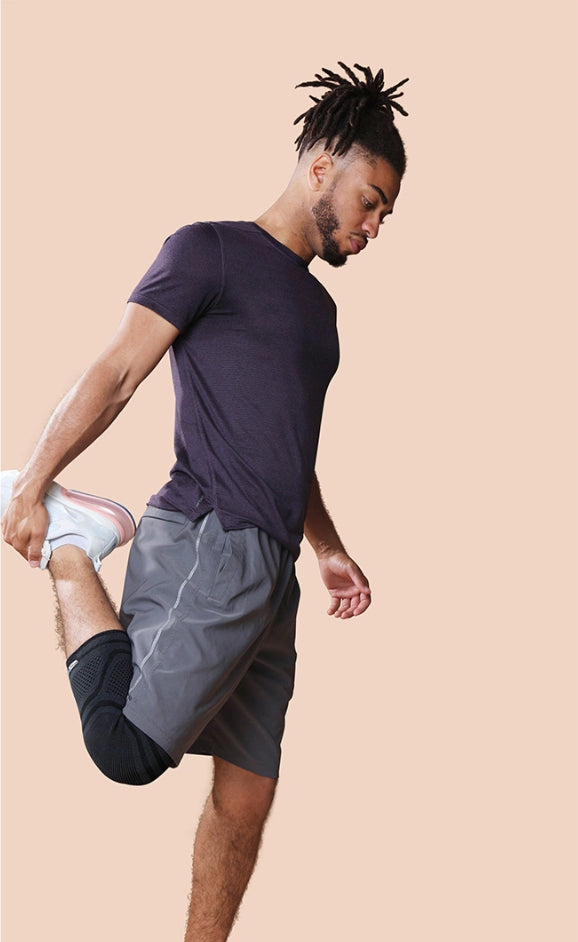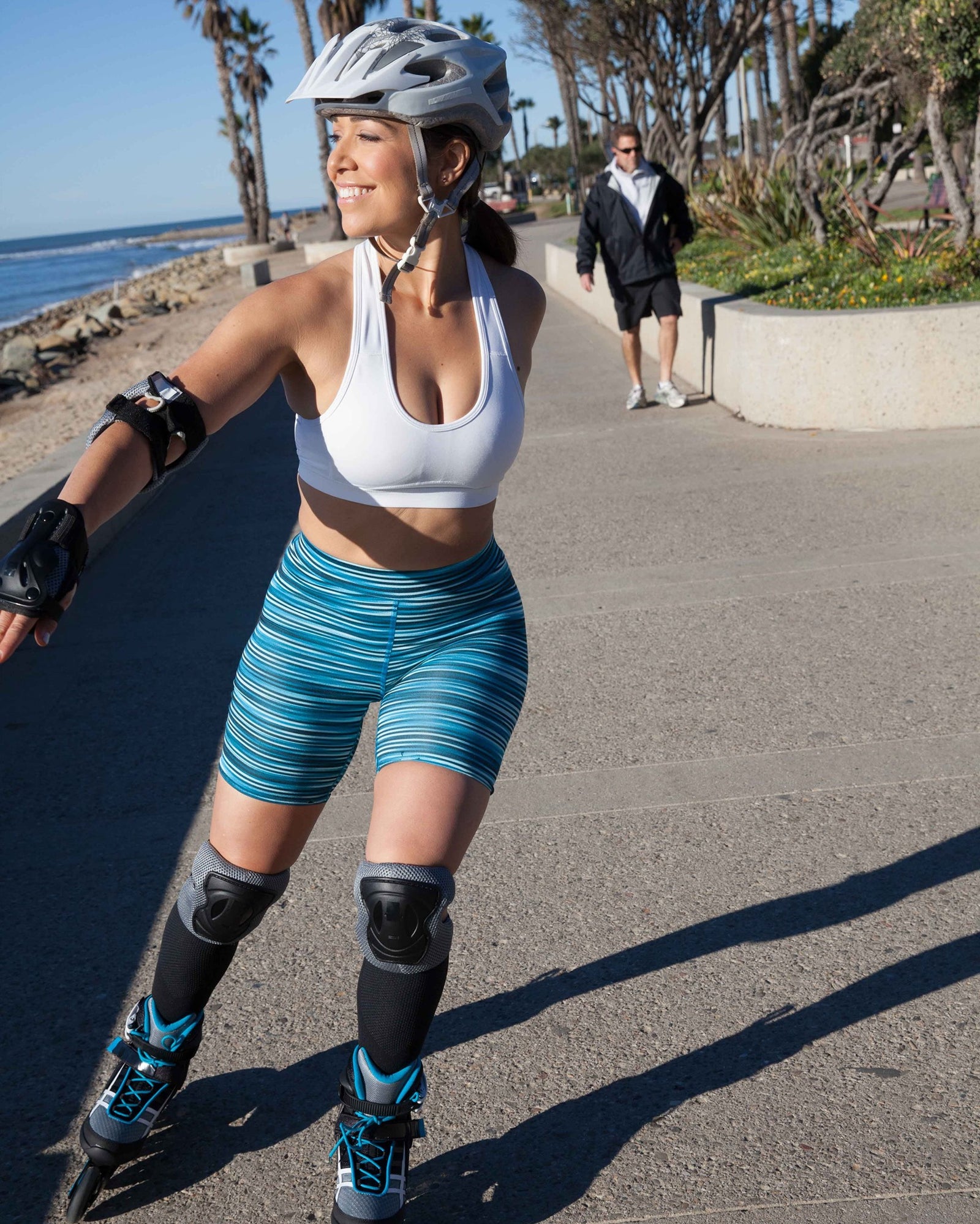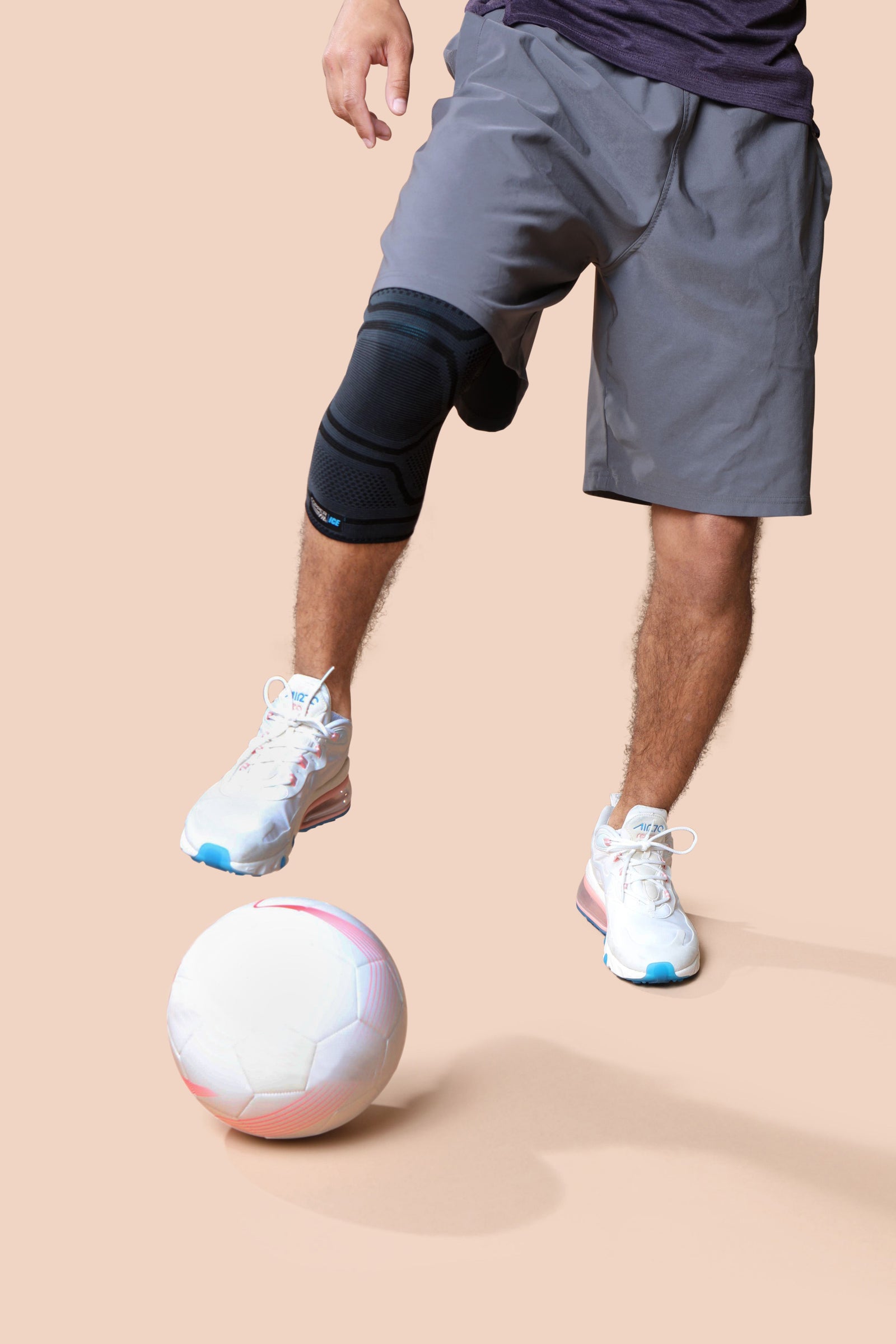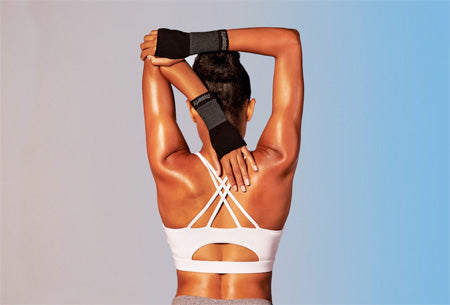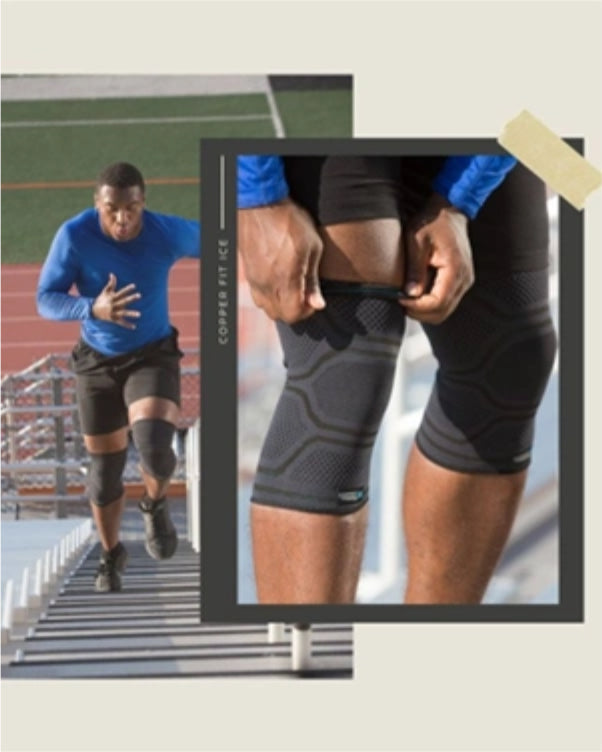
Key Takeaways:
-
Compression socks can help support circulation, soothe leg discomfort, and support recovery for people who stand, sit, or move a lot during the day, making them popular among athletes, travelers, and professionals. They work by applying gentle, graduated pressure that helps move blood back toward the heart.
-
While compression socks can be useful, they’re not suitable for everyone. People with sensitive skin, nerve issues, circulation problems, or recent injuries should talk to a healthcare provider before using them. Warning signs like numbness, redness, or discomfort may mean the socks are too tight or not appropriate.
-
To wear compression socks safely, choose the right pressure level, ensure a good fit, and start with short wear times. Avoid wrinkles or bunching, wear them when swelling is low (like in the morning), and monitor your body’s response to stay comfortable and supported.
Compression socks have become a go-to tool for active individuals, busy professionals, travelers, and just about anyone looking to feel more supported on their feet. These socks are designed to help encourage healthy circulation and can help soothe feelings of tension and discomfort.
For many people, compression socks are a simple, wearable way to support recovery and keep moving with more ease. But they aren’t the right choice for everyone.
In some cases, wearing compression gear without proper guidance can do more harm than good, especially for people with certain sensitivities, circulation issues, or skin challenges. That’s why it’s important to understand when compression socks can help, and when it’s better to steer clear.
Let’s walk through what compression socks are, how they work, who should use them, and who should speak to a doctor before giving them a try.
What Are Compression Socks and How Do They Work?
Compression socks are specially designed garments that gently hug the legs, applying graduated pressure that’s typically strongest around the ankles and gradually loosens toward the calf or thigh. The idea is to help support what the body already does naturally, supporting circulation and pushing blood back toward the heart.
These socks are commonly worn by athletes, frequent flyers, and people who stand or sit for extended periods. That includes healthcare workers, retail employees, teachers, office workers, and fitness enthusiasts.
Wearing the right compression gear—at the right time and for the right reasons—can be a helpful way to stay proactive about recovery, circulation, and general comfort.
Who Can Benefit From Wearing Compression Socks?
If you’ve ever experienced heavy or tired legs after standing for hours, or if your calves feel sore after a workout, compression socks might be a helpful tool in your recovery routine.
Some of the most common users include:
- Athletes (and anyone hitting the gym or the track), looking to support muscle recoveryafter a workout
- Travelers who want to stay more comfortable on long flights or road trips
- Professionals on their feet all day who experience daily leg fatigue
- People who sit for long hours and want to help support natural circulation
- Pregnant people looking to ease leg swelling and discomfort
- Older adults looking for safe, wearable support to promote daily mobility
Many people find that starting with a lighter level of compression during specific parts of the day—like work hours or post-workout recovery—can make a noticeable difference in how they feel.
Who Should Avoid Compression Socks?
Compression socks are designed to support natural processes. However, in certain situations, they may work against what your body needs. While many people can wear them comfortably, some may need to avoid them entirely or talk to a doctor before using them.
Here are some reasons to hold off on compression gear until you’ve had a conversation with your provider:
1. If You Have Highly Sensitive or Fragile Skin
Compression socks fit snugly by design. But for people with extremely sensitive or easily irritated skin, even gentle pressure can cause rubbing, discomfort, or chafing. If your skin is prone to redness, breakdown, or pressure marks, wearing tight-fitting garments may not be the best option, especially for long periods.
Moisture-wicking, breathable fabrics can help reduce friction, but it’s still essential to monitor your skin regularly. If you notice any irritation, discomfort, or marks that don’t fade, it may be time to pause use and reassess.
2. If You Have Reduced Circulation or Nerve Sensitivity
Compression gear is intended to help support healthy blood flow, but if you already have a condition that limits circulation or sensation, compression socks could interfere with what your body needs. Numbness, tingling, or cold feet may be a sign that your circulation is already compromised, in which case squeezing the area—even lightly—could make things worse.
If you’ve ever experienced leg numbness, reduced sensitivity, or chronic cold feet, it's best to avoid compression socks until your healthcare provider gives the green light.
3. If You’re Recovering From Certain Injuries or Surgeries
While compression can be a useful recovery tool, it’s important to remember that after a lower-body injury or surgery, your body might need time to manage swelling naturally before compression is introduced.
Using compression gear too soon could disrupt the healing process or put extra pressure on healing tissues. If you're in post-op recovery or healing from a recent strain, talk with your provider about when it's safe to use compression again.
4. If You Can’t Properly Apply or Remove Them Yourself
Compression socks need to be worn correctly to be effective and safe. If you have limited mobility or difficulty reaching your feet, you may struggle to put them on or take them off. Wearing them improperly can cause folds or bunching, which may lead to uneven pressure or even restrict circulation.
If applying compression socks is a challenge, consider alternatives like loose-fitting wraps, leg elevation, or gentle massage until you can safely manage the gear on your own or with assistance.
Warning Signs That Compression Socks May Not Be Right for You
It’s always important to pay attention to how your body responds when wearing compression socks.
These signs could mean it’s time to stop wearing them, find a different fit, or check in with a healthcare provider:
- Numbness or tingling in your feet or legs while wearing the socks
- Cold toes or feet, which may indicate restricted blood flow
- Redness or marks that don’t fade after removing the socks
- Skin irritation, itching, or discomfort during or after wear
- Swelling above or below the compression area
Compression socks should feel snug, not restrictive. If they ever feel too tight, bunch up, or dig into your skin, it’s time to reassess the fit, compression level, or whether they’re appropriate for you at all.
How To Wear Compression Socks Safely
If you don’t have any of the risk factors listed above and believe compression socks can help provide you with support and relief, there are a few things you can do to make sure your compression socks are as safe and effective as possible.
- Choose the right compression level:For everyday support, look for light to moderate compression. Higher-pressure socks should only be worn with medical supervision.
- Ensure proper fit: Compression socks should be snug, but not painful. If they’re hard to get on or leave deep indentations, they may be too tight.
- Put them on in the morning:This is when your legs are less swollen and the fit is easier to manage. Many people also like to wear them during or after workouts, or while traveling.
- Avoid bunching or rolling:This creates pressure points that can reduce circulation.
- Ease into it:Start with shorter wear times and increase gradually as your body adjusts.
Other Ways To Support Leg Comfort and Circulation
If compression socks aren’t a fit for you—or you’re looking for more ways to support your recovery—there are still plenty of proactive steps you can take to keep your legs feeling energized.
Keep Moving
Whether you work at a desk or stand for hours, adding small moments of movement throughout the day can make a big difference. Simple actions like calf raises, short walks, or light stretching can help support circulation and reduce leg fatigue.
Focus on Hydration and Nutrition
Drinking enough water throughout the day helps maintain blood volume and reduces fluid retention. Eating foods rich in potassium and magnesium—like bananas, leafy greens, and avocados—can also support your body’s natural balance. And cutting back on excess salt may help reduce swelling and fluid buildup in the lower body.
Elevate Your Legs
When you’re resting at the end of the day, try elevating your legs with a pillow or cushion. Lifting them slightly above your heart can help encourage fluid movement and give your legs a break from daily wear and tear.
Consider Gentle Massage
Whether it’s self-massage or using a recovery tool like a deep tissue massage gun, many people find that targeted muscle work helps promote relaxation and ease daily soreness. Just remember to go slow and avoid areas that feel too tender or sensitive.
FAQs
What happens if you wear compression socks if you don't need them?
Compression stockings are generally safe but can cause you pain or even cut off your circulation if you don't wear the proper size. The pressure also can cause minor bruising or skin ulcers, and tightly fitting socks also can cause dry skin, redness, and itching.
How many hours a day should you wear compression stockings?
Compression stockings should generally be worn for as long as they are needed for the purpose. For example, if they're used to manage a medical condition, they should be worn as often as possible or as directed by a doctor. During travel or long periods of sitting/standing, they can be removed once you can move around.
How do I know if compression socks are too tight?
Compression socks that are too tight can cause discomfort, pain, skin discoloration, numbness, or tingling in the legs and feet. If you experience these symptoms while wearing compression socks, they are likely too tight.
The Bottom Line
At Copper Fit, we know how frustrating it can be to feel held back by tension, soreness, or long recovery times. That’s why we create gear designed to support how your body moves, without getting in the way. Whether compression socks are a fit for you or not, there are always ways to help your body feel better, move easier, and recover smarter.
We believe in giving your body the tools it needs to do what it’s already built to do—whether that’s staying active, getting stronger, or just feeling more comfortable in your day-to-day routine. Keep listening to your body, keep asking questions, and most of all—keep moving.
Sources:
Compression Clothing and Circulation Benefits | UPMC HealthBeat
Compression Garments and Recovery from Exercise: A Meta-Analysis | PubMed

